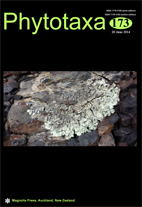Abstract
Omphalodes (Boraginaceae s.s., Cynoglosseae s.l.) comprises ca. 29 species of annual and perennial plants distributed in three main disjunct areas: Western Palearctic, Japan and SW of North America. This paper uses micromorphological and DNA data to re-assess the monophyly and taxonomy of the genus. Morphological characters of 15 species of Omphalodes and four closely-related genera were analysed using SEM. A total of 82 ITS and 68 trnL–trnF sequences were newly sequenced, including 14 species of Omphalodes and three genera of the tribe Cynoglosseae. Phylogenetic analyses of 57 genera (186 species) of Boraginaceae indicated that Omphalodes as currently circumscribed is formed by three independent lineages, which were supported by morphological characters of the fruit. As a result, and in the interest of a more natural classification, two new genera are described to accommodate Omphalodes scorpioides (Memoremea) from Europe and the Japanese species (Nihon). Memoremea is distinguished from all the other species previously included in Omphalodes by the apical attachment scar and the hollow nutlet margin. Nihon is easily discriminated by the abrupt change of margin ornamentation towards the nutlet aperture. We also provided a taxonomic treatment that proposes the lowest number of nomenclature changes, although six new combinations are required.

